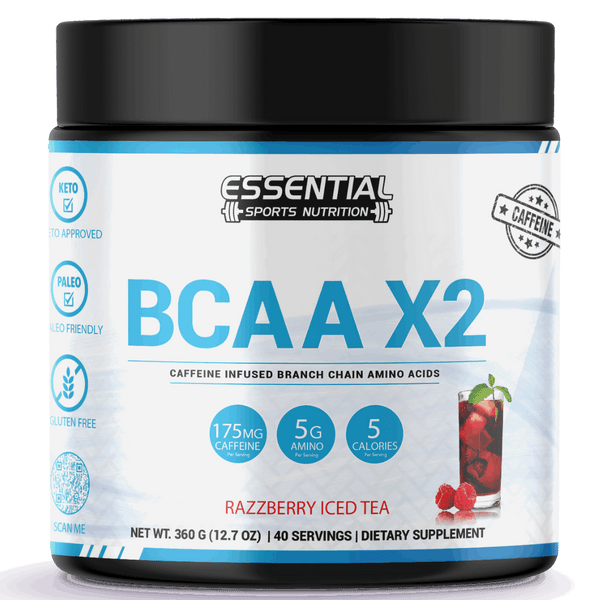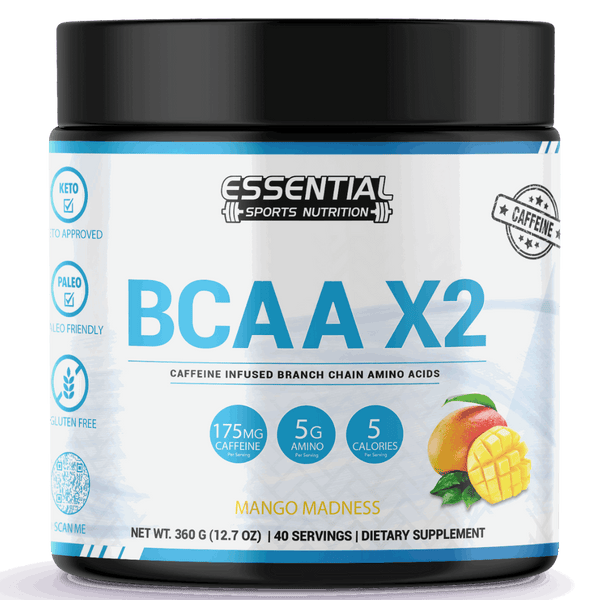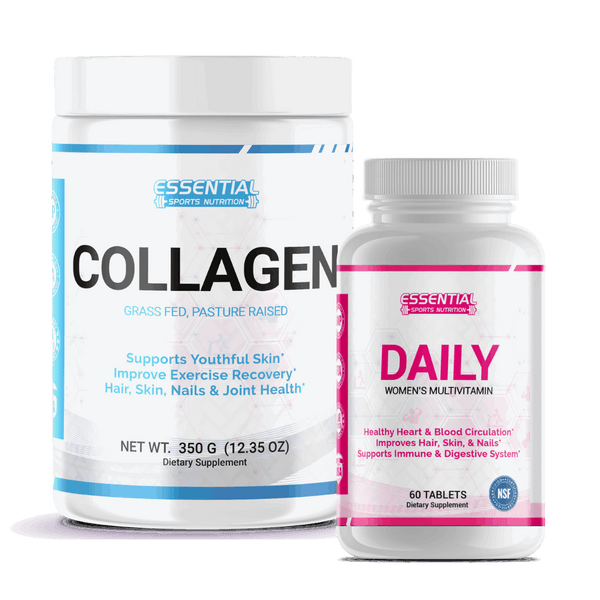Swedish Massage vs Deep Tissue Massage: Find the Best Massage for You
Are you feeling tense, with muscles knotted up from stress or maybe too much sitting? Perhaps you're considering a massage but are not sure which type to choose for your needs. The world of massage therapy offers many solutions, and two popular options stand out: Swedish massages and deep tissue massages.
Each has its unique approach to helping your body relax or recover from muscle pain.
Swedish massage is known for its gentle touch. It uses long strokes coupled with light-to-moderate pressure to soothe the entire body, offering a peaceful escape from daily stress.
On the other hand, if you're dealing with stubborn muscle tension that just won't quit, deep tissue massage might be what your body needs, applying more force to reach deeper layers of muscle pain.
This article compares these two types of massages head-to-head – their techniques, benefits, and what makes them different from each other. By understanding these nuances, you can make an informed decision about which is best suited for relieving your tension or helping you chill out entirely.

Key Takeaways
- Swedish massage uses gentle strokes for relaxation and stress relief, while deep tissue massage applies more pressure to target muscle pain.
- Swedish massage improves circulation and eases muscle tension, offering benefits like better sleep and increased flexibility.
- Deep tissue massage focuses on chronic pain areas by reaching deeper muscle layers, helping with conditions such as fibromyalgia and sports injuries.
- Both massages have unique techniques; Swedish involves light touches, whereas deep tissue uses firm strokes to address deep-set muscle issues.
- Your choice between the two should depend on whether you need relaxation or have specific pain points needing attention.
Understanding Swedish Massage
Swedish massage uses gentle strokes to relax the whole body. This massage technique boosts blood circulation and eases muscle tension.
Characteristics of Swedish Massage
Swedish massage aims for relaxation and relief from stress and chronic pain. It employs five key techniques: effleurage (long, smooth strokes), petrissage (kneading the muscles), friction (deep pressure movements), tapotement (rhythmic tapping), and vibration or shaking.
These methods work together to enhance blood flow, soothe tense muscles, and boost overall physical well-being.
Massage therapists use their hands, fingers, palms, and sometimes even their elbows to apply pressure on the body's soft tissues. This gentle yet effective approach targets muscle knots and tension areas without causing discomfort.
The focus is on promoting healing by encouraging better circulation of blood throughout the body., ensuring a tranquil experience that benefits both mind and body.
Benefits of Swedish Massage
Swedish massage offers many health benefits. It uses gentle techniques to relax your body and mind.
- Reduces stress: This massage lowers cortisol levels, which helps ease stress. Feeling more relaxed can improve your mood and energy.
- Relieves muscle tension: Gentle pressure on muscles smooths out knots and tension. This leads to a feeling of ease throughout your body.
- Boosts blood flow: The circular movements in Swedish massage stimulate better blood circulation. Healthy blood flow brings more oxygen to your tissues, promoting healing.
- Eliminates toxins: Improved circulation helps flush harmful substances from your body. This detoxification process supports overall health.
- Offers pain relief: Targeting muscle fibers can provide short-term relief from aches, such as lower back pain or neck pain.
- Increases flexibility: Massaging muscles makes them more pliable. Over time, you may notice an improved range of motion in joints.
- Enhances sleep quality: Relaxation and reduced muscle tension contribute to better sleep patterns.
- Supports mental clarity: By reducing stress and tension, this therapeutic massage can clear your mind, improving focus and concentration.
These benefits make Swedish massage a great choice for anyone looking to relieve stress, manage pain, or simply indulge in relaxation for their body and mind.
Understanding Deep Tissue Massage
Deep tissue massage focuses on the deeper layers of muscles and connective tissues. It helps release chronic muscle tension and knots by applying firm pressure and slow strokes.

Characteristics of Deep Tissue Massage
Deep tissue massage targets the inner layers of your muscles and connective tissues. It uses firm to deep pressure to reach these areas. This type of massage helps break down adhesions, which are bands of painful, rigid tissue.
By doing so, it can restore normal movement and relieve pain.
Many people choose deep tissue massage for managing chronic aches in areas such as the neck, back, and shoulders. It's also effective for conditions like fibromyalgia and muscle tension caused by sports injuries or overuse.
Unlike lighter massage therapies, it focuses on problem areas, offering relief through more forceful techniques.
Benefits of Deep Tissue Massage
Deep tissue massage offers more than just relaxation. It targets muscle pain at its source, providing long-term benefits for the body. Here are some of its major advantages:
- Reduces chronic muscle pain: This massage gets deep into the muscle tissue. It eases tight muscles and helps with pain management.
- Promotes relaxation: Even though it's forceful, many find deep tissue massage deeply relaxing. It reduces stress and can lower high blood pressure.
- Breaks up scar tissue: Over time, this massage can improve mobility by breaking down scar tissue from injuries or surgeries.
- Increases mobility: By focusing on areas like the neck, lower back, and shoulders, it enhances your range of motion. This makes physical activity easier.
- Helps with injury recovery: Athletes often use deep tissue massage for sports injuries. It speeds up healing by increasing blood flow to the injured area.
- Aids in managing high blood pressure: Studies have shown that regular sessions can help reduce hypertension, improving overall heart health.
- Targets trigger points: By applying pressure to trigger points or knots in the muscle, this therapy relieves myofascial pain syndrome.
- Offers relief for pregnant women: Tailored techniques can reduce pregnancy pains and discomforts safely.
This therapy works best when performed by a licensed massage therapist who understands how to apply pressure effectively without causing harm. Regular sessions contribute to better physical and mental well-being, making deep tissue massage an effective tool for anyone looking to address specific body pains or improve their overall health condition.
Comparing Swedish and Deep Tissue Massage
Swedish and deep-tissue massages stand out as popular choices for those seeking relief from stress and muscle tension. While both offer unique benefits, understanding their differences helps in choosing the right massage for your needs.
Differences in Technique
Swedish massage and deep tissue massage share basic strokes, but they apply them differently. In Swedish massage, masseuses use their palms and fingertips to perform light-to-medium pressure techniques.
They aim for relaxation, targeting the top layers of muscles. This helps calm the nervous system and promotes stress relief.
Deep tissue massage goes further into the body's musculature, using firm pressure from thumbs and sometimes even elbows. Therapists focus on specific problem areas like knotted muscles or trigger points.
Techniques such as myofascial release are common in this type of massage to address chronic pain issues including lower-back pain or sports injuries. The goal is more about long-term health benefits than immediate comfort levels.
Differences in Pressure
Swedish massage techniques often involve lighter touches, such as long strokes and kneading with the palms of the hand. This approach applies light to medium pressure, aiming for relaxation and increased blood flow throughout the body.
It's gentle enough for those seeking a calming experience or new to massage therapy.
Deep tissue massage, on the other hand, reaches deeper layers of muscle and connective tissue. Therapists use firm pressure along with slow strokes to target areas of tension and pain.
This method is ideal for people with chronic muscle problems like tightness, repetitive strain injuries like carpal tunnel syndrome, or recovery from sports injuries. The intense pressure helps break up trigger points or "knots" that can cause discomfort and limited range of motion.
Differences in Health Benefits
Swedish massage often focuses on relaxation and stress relief. It helps to calm the mind and ease tension in the body, making it ideal for those who need a break from daily pressures.
This type of massage boosts overall well-being by improving blood circulation and flexibility.
Deep tissue massage targets deeper layers of muscle and connective tissue. It is great for relieving chronic muscle pain, reducing inflammation, and aiding recovery from sports injuries like tennis elbow or whiplash.
By focusing on trigger points therapy, deep tissue techniques support musculoskeletal health, offering both physical and psychological benefits through intense pressure application.
Conclusion

Both Swedish and deep tissue massages offer distinct benefits. Choosing between the two depends on your needs. Swedish massage primarily focuses on relaxation through gentle, flowing strokes and kneading, making it ideal for reducing stress and promoting overall well-being. Conversely, deep tissue massage targets deeper layers of muscle and connective tissue to alleviate chronic tension and address specific areas of discomfort or pain. It may involve more intense pressure and firmer techniques, which can effectively release muscle knots and improve mobility.
It's important to communicate openly with your massage therapist to ensure the treatment aligns with your preferences and goals. Also, consider your personal health conditions and tolerance for pressure when choosing between the two methods. Whether you opt for Swedish or deep tissue massage, prioritizing self-care and regular bodywork can contribute significantly to your physical and mental health. Listen to your body and pick the right type for you.
Swedish Massage vs Deep Tissue Massage FAQs
Q: What is the difference between Swedish massage and deep tissue massage?
A: Swedish massage is a more gentle and relaxing massage technique that uses long, flowing strokes, while deep tissue massage applies more pressure to target deep layers of muscle and connective tissue. Deep tissue is great for musculoskeletal pain or sports injuries.
Q: How do I know if I should choose Swedish massage or deep tissue massage?
A: If you are looking for a more relaxing experience to reduce stress and improve circulation, Swedish massage is a great choice. Deep tissue massage is best for individuals seeking relief from chronic muscle tension and pain.
Q: Can a massage therapist provide both Swedish and deep tissue massages in one session?
A: Yes, many massage therapists are trained to incorporate both Swedish and deep tissue techniques into a single session to tailor the treatment to the client's specific needs.
Q: Which type of massage is better suited for addressing muscle knots and tension?
A: Deep tissue massage is typically more effective in releasing muscle knots and tension, as the deep pressure targets specific areas of tightness in the muscles.
Q: What are the main benefits of Swedish massage?
A: Swedish massage may help improve circulation, reduce muscle tension, promote relaxation, and boost overall well-being.
Q: How does deep tissue massage differ from Swedish massage in terms of the massage technique used?
A: Deep tissue massage focuses on applying firm pressure to release chronic muscle tension, whereas Swedish massage uses long, gliding strokes to relax the body and mind.
Q: Can both Swedish and deep tissue massages be beneficial for individuals dealing with chronic pain?
A: Yes, both Swedish and deep-tissue massages can help manage chronic pain, but deep-tissue massage may be more effective in targeting specific areas of discomfort.
Q: Can a massage gun be used for both types of massage?
A: Yes! Massage guns can mimic both techniques by adjusting the speed and attachments. For a Swedish massage effect, use it on a low setting with a softer head. Switch to higher speeds and firmer heads for deep-tissue benefits like breaking up trigger points.
Q: Who should get a Swedish massage?
A: Anyone looking to relax or relieve mild tension might enjoy a Swedish massage. It's also good if you're new to massage therapy because it uses lighter pressure.
Q: Is deep tissue massage better for chronic headaches than Swedish?
A: Deep tissue massages can be more effective in treating conditions like chronic headaches because they focus on relieving tension in specific areas that could be causing pain, such as the neck or shoulders.
Q: Should I see a healthcare professional before getting these massages?
A: It's always wise to consult with a healthcare professional if you have underlying health issues or severe pain before trying either type of massage, especially deep tissue which is more intense.























